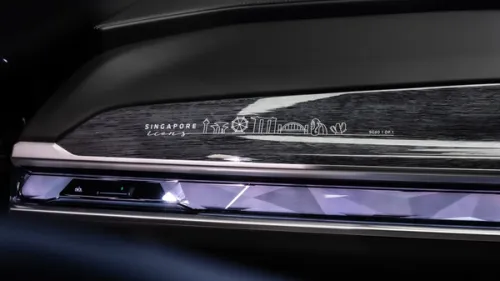Pirelli Explains The Tyre Failures at Silverstone
After a comprehensive analysis of the tyres used at Silverstone, Pirelli has concluded that the causes of the failures were principally down to a combination of the following factors: 1. Rear tyres that were mounted the wrong way round; The right hand tyre being placed where the left hand one should be and vice versa, on the cars that suffered failures. The tyres supplied this year have an asymmetric structure, meaning they are not designed to be interchangeable. So swapping the tyres round has an effect on how they work in certain conditions. In particular, the external part is designed to cope with the very high loads that are generated while cornering at a circuit as demanding as Silverstone, with its rapid left-hand bends and some kerbs that are particularly aggressive.

- 1. The use of tyre pressures that were excessively low or in any case lower than those indicated by Pirelli. Under-inflating the tyres means that the tyre is subjected to more stressful working conditions.
- 2. The use of extreme camber angles.
- 3. Kerbing that was particularly aggressive on fast corners, such as that on turn four at Silverstone, which was the scene of most of the failures. Consequently it was the left-rear tyres that were affected.
The only problems that had come to light before Silverstone were to do with delamination, which was a completely different phenomenon. To stop these delaminations Pirelli found a solution by suggesting that the teams use the tyres that were tried out in Canada from Silverstone onwards. When this proposal was not accepted, Pirelli found another solution through laboratory testing, with a different bonding process to attach the tread to the carcass. So the problem of delamination has nothing at all to do with what was seen in Great Britain.
Following the conclusions of the analysis, Pirelli underlined that:
- · - Mounting the tyres the wrong way round is a practice that was nonetheless underestimated by everybody, above all Pirelli, which did not forbid this.
- · -In the same way, under-inflation of the tyres and extreme camber settings, over which Pirelli has no control, are choices that can be dangerous under certain circumstances. Because of this, Pirelli asked the FIA for these parameters will be a topic of accurate and future examinations. Pirelli has also asked for compliance with these rules to be checked by a dedicated delegate.
- · - Pirelli underlined that the 2013 tyre range does not compromise driver safety in any way if used in the correct manner, and that it meets all the safety standards requested by the FIA.
The logical conclusion is that it is essential for tyres with the performance and technical sophistication of the 2013 range to be regulated and carefully controlled by Pirelli itself. In order to ensure the optimal functioning of the tyres, the Italian firm would need real-time data from the teams regarding fundamental parameters such as pressure, temperature and camber angles.
Paul Hembery, Pirelli’s motorsport director, said “What happened at Silverstone was completely unexpected and it was the first time that anything like this has ever occurred in more than a century of Pirelli in motorsport. These incidents, which have upset us greatly, have stressed the urgency of the changes that we already suggested – which will be introduced during for free practice in Germany on Friday. We would like to acknowledge the willingness of the FIA, FOM teams, and drivers to act quickly to find an immediate solution to the problem. In particular, the adoption of winter tests, arranged with the FIA, that are more suitable for tyre development and the possibility of carrying out in-season testing will contribute to the realization of tyres with increasingly improved standards of safety and performance. I’d like to re-emphasize the fact that the 2013 range of tyres, used in the correct way, is completely safe. What happened at Silverstone though has led us to ask for full access to real time tyre data to ensure the correct usage and development of tyres that have the sophistication we were asked to provide and extremely high performance that has lowered lap times by more than two seconds on average. While we wait for a change in the rules, we will introduce tyres that are easier to manage.”
Paul Hembery commented further that “Contrary to the impression that some people have formed, I would like to underline the collaboration and support that we are receiving from the teams, drivers, FIA and FOM. In no way are we intending to create arguments or attack anybody. We have taken our responsibilities upon ourselves as our press release indicates. But not having full control over all the elements that impact on the use of the tyres, we need everybody’s contribution. With regard to this, we are receiving the full support of all the parties involved, for which we are very grateful.”
Credits: Oneshift News Team


Get the Best Price for your used car
from 500+ dealers in 24 hours

- Convenient and Hassle-Free
- Consumer Protection
Transparent Process
With No Obligation








